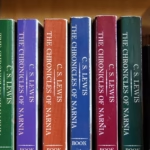Read every series in the right order

Aloysius Archer Books in Chronological Order – Complete Reading Guide
Table of Contents
Quick Answer (TL;DR)
Read Aloysius Archer in publication order, which also matches the in-universe chronology:
- One Good Deed (set in 1949, Poca City)
- A Gambling Man (1950, Reno → Bay Town/California; Archer apprentices as a PI)
- Dream Town (New Year’s Eve 1952 → 1953, Los Angeles & Las Vegas)
That straight-through sequence preserves the character arc, the noir mood swings, and the escalating professional stakes.
Introduction
If you’re here for Aloysius Archer Books in Chronological Order, you’ve already felt the series’ draw: a post-war drifter with an iron moral barometer, a parole slip, and just enough luck to survive 20th-century American corruption. David Baldacci’s Archer cycle is classic hard-boiled with a modern engine—short, propulsive chapters; smoky rooms; high hats and low motives. It’s also a patient character study that rewards reading in order.
This guide gives you everything at a glance: a no-spoiler order, skimmable buy links, quick facts, detailed but spoiler-lite blurbs, a timeline for the ongoing cast (including Willie Dash and Liberty Callahan), collector notes, and a clean final checklist. Whether you’re sampling Baldacci beyond his contemporary thrillers or you’re in the mood for a throwback PI journey, this is your complete map.
Quick Facts
| Item | Details |
|---|---|
| Series | Aloysius Archer by David Baldacci (3 novels) |
| Core Genres | Historical crime, hard-boiled noir, private-investigator thriller |
| Typical Length | ~400–450 pages per book (varies by edition/trim) |
| Estimated Read Time | ~8.5–10 hours per book at 250 wpm; ~26–30 hours for the trilogy |
| Reading Difficulty | Accessible mainstream thriller; period slang & noir patter add flavor |
| Content Notes | Murder, organized crime, blackmail, crooked politics, post-war trauma; some alcohol/smoking typical of the era |
| Ideal Age Range | Adults & mature teens comfortable with crime fiction |
| Media Adaptations | None announced/released for the Archer novels as of this writing |
| Perfect If You Like | Raymond Chandler, Ross Macdonald, James Ellroy (lighter), Michael Connelly’s Bosch for procedural drive |
About the Book Series
The Archer trilogy is Baldacci’s ode to the dawn of the American 1950s, where promise and rot share the same neon marquee. Archer—a decorated WWII veteran—walks out of prison in 1949 with a parole card and a suitcase, only to find small-town “respectability” more dangerous than enemy fire. By Book 2 he’s headed west, where luck, grit, and a blood-red Delahaye lead him to a grizzled mentor in the PI trade. By Book 3 he’s trading wisecracks with studio players while ducking mob bullets and finding out exactly how expensive dreams can be in Los Angeles.
The books are plotty and propulsive, but they’re built on consequence: every drink, every debt, every favor, and every flirted-with temptation comes due. That’s why we tell readers who ask for Aloysius Archer Books in Chronological Order to stick with publication order—every emotional beat lands harder.
Aloysius Archer Books at a Glance
| # | Title (Year) | Amazon Buy Link |
|---|---|---|
| 1 | One Good Deed (2019) | Buy on Amazon |
| 2 | A Gambling Man (2021) | Buy on Amazon |
| 3 | Dream Town (2022) | Buy on Amazon |
Aloysius Archer Chronological Reading Order
1) One Good Deed (Archer #1) — 1949, Poca City
Fresh out of Carderock Prison with a parole sheet full of do’s and don’ts, Archer arrives in Poca City looking for work and anonymity. He finds neither. A powerful businessman hires him to collect a debt; the debtor refuses; a mistress with a diamond-hard agenda sizes him up; and his prim parole officer, Miss Crabtree, is watching every move. When a murder drops under Archer’s nose, he becomes the easy suspect: the ex-con drifter who just got into town.
Why it matters:
- Introduces Archer’s moral geometry—he’s a rule-breaker when the rule’s wrong, but he’ll follow a bad rule if that’s what keeps an innocent safe.
- Establishes the post-war American crossroads: small-town facades over big-time greed.
- Plants the seeds for Archer’s next act: he’s not just a guy who can throw a punch; he can untangle a lie.
Tone & touchstones: Dusty streets, back rooms, deceptive charmers, a slow-burn mystery that builds to a bruising reckoning.
2) A Gambling Man (Archer #2) — 1950, Reno → Bay Town, California
The West calls, and Archer answers. After a nearly fatal Poca City detour, he boards a bus for California because “money gets made there.” A stop in Reno—part luck, part fate—lands him a wad of cash, an eye-popping 1939 Delahaye, and a traveling companion: Liberty Callahan, an aspiring actress bound for Hollywood. When they reach Bay Town, Archer angles for a job with legendary PI Willie Dash, a former FBI man with a gray moral coat. Dash hires him, and the first case—blackmail on a mayoral candidate—turns into something far blacker: bodies, brothels, drug traffic, and old sins with deep donors.
Why it matters:
- Archer’s apprenticeship formally begins—stakeouts, legwork, and “do not talk yourself into a coffin” tradecraft.
- Liberty becomes more than a ride share; she’s a compass who can spot a Hollywood lie from a block away.
- The book widens the stage from provincial scandal to institutional rot, with real money backing the bad guys.
Tone & touchstones: Bright lights with busted bulbs, PI banter, smoky offices, and a city that promises gold but sells vice.
3) Dream Town (Archer #3) — New Year’s Eve 1952 → 1953, Los Angeles & Las Vegas
Archer rolls into LA to ring in the New Year with Liberty, and—because noir loves timing—he’s immediately hired by Eleanor Lamb, a screenwriter sure someone wants her dead. Stalker calls. A suspicious blue sedan. A bloody knife left in a sink. Before Archer can officially take the case, there’s a body in Eleanor’s home—and Eleanor vanishes. With Willie Dash backing him and Liberty in the mix, Archer follows a trail through mobbed-up Vegas money, studio dunks, cops on the take, and star-bright façades hiding coal-black secrets.
Why it matters:
- Archer graduates from apprentice to full partner, not just by title but by choices that only he can make.
- The Liberty-Archer dynamic matures under fire—chemistry, loyalty, and the price of different dreams.
- It completes a thematic arc: how a man with little left to lose finds the line he won’t cross, even when nobody else can see it.
Tone & touchstones: Studio lots and back alleys, rehearsed smiles and unrehearsed violence, cigarettes, saxophones, and the knowledge that a door marked “EXIT” might hide stairs to the basement.
Series Timeline & Character Development
Aloysius Archer
- Book 1: The Paroled Knight Errant. He’s tough but teachable, someone who can sit in a quiet room and figure out why the truth hurts. The ex-con label sticks, but his conduct keeps reshaping it.
- Book 2: The Apprentice. Under Willie Dash, Archer learns the difference between knowing something and proving it, between gossip and leverage. He discovers he can be both blunt instrument and precision tool.
- Book 3: The Professional. Archer becomes the guy other people lean on when logic collapses. He’s not just solving cases; he’s setting standards.
Willie Dash
- The ex-FBI legend who teaches Archer the private eye’s cardinal rules: keep receipts, keep distance, and keep breathing. Dash is the reality check and the invisible shield; his network and wariness shape Archer’s survival.
Liberty Callahan
- Introduced as an aspiring actress with grit, Liberty proves to be one of the series’ best bull** detectors**. She knows when to perform, when to push, and when to peel back the mask—on stage and off. Her rapport with Archer grows from charm to gravitas, a counterweight to cynicism.
The World
- Poca City is baleful and tight-lipped; Bay Town is sunny with rot underneath; Los Angeles and Vegas are cathedrals to self-invention where hope and predation share a wall. The geography scales with Archer’s skill.
Themes that tighten in order
- Second chances—parole is literal in Book 1; figurative in Books 2–3.
- Power & perception—who tells the story, who gets paid for it, who ends up dead because of it.
- Code vs. law—Archer’s internal code, Dash’s practiced caution, the law’s convenient blind spots.
Novels sorted in order of in-universe events
- One Good Deed (1949)
- A Gambling Man (1950)
- Dream Town (1952–53)
(Chronology lines up 1:1 with publication.)
Novels sorted in order of publication
- One Good Deed — 2019
- A Gambling Man — 2021
- Dream Town — 2022
Companion Works
No novellas or official prequels are required for continuity. If you’re building a thematic shelf around Archer’s era and vibe, consider:
- Philip Marlowe novels (Raymond Chandler) for the linguistic snap and moral haze.
- Lew Archer (Ross Macdonald)—different Archer, similar psychological depth.
- Joel Cairo / Sam Spade world (Dashiell Hammett) for the brass-tacks blueprint of noir.
Separate Baldacci series with compatible energy, set in different periods/contexts:
- Will Robie (modern covert ops), Amos Decker (memory-gifted detective), King & Maxwell (ex-Secret Service PIs). These are not interconnected with Archer’s continuity; they’re taste-adjacent options.
Editions & Formats (hardcover, collector, audio)
Hardcover vs. Trade vs. Mass Market
- All three entries exist across formats. Page counts float with trim/typography (~400–450 pp typical). For a uniform shelf, match the Grand Central hardcovers (or matching-spine trades).
Audiobooks
- Unabridged editions are available for all three. The format works especially well for Archer; noir rhythms and patter shine in audio, and the short-chapter structure keeps commutes lively.
Collector Tips
- First-printing hardcovers (complete number lines) with clean dust jackets hold value best.
- TV/film rumors wax and wane; if tie-ins ever arrive, early-state jackets typically remain the collectors’ pick.
- If you like a vintage aesthetic, pair the Archer hardcovers with period-style library jackets or slipcases—looks sharp on a noir shelf.
Why Read Aloysius Archer Books in Chronological Order?
- Continuity of consequence. The reasons Archer makes certain calls in Dream Town are planted as early as One Good Deed.
- Relationship momentum. Archer-Dash professional trust and Archer-Liberty emotional bandwidth deepen book to book.
- World escalation. The series scales from small-town scheming to West Coast machine politics and mob ecosystems. Skipping ahead deflates that “ohhh, so that’s why” satisfaction.
Short version: if you want the full punch, keep to Aloysius Archer Books in Chronological Order exactly as published.
Author Spotlight: David Baldacci
David Baldacci has been publishing bestsellers since Absolute Power (1996) kicked the door open (and became a Clint Eastwood film). He’s now the author of 50+ adult novels, translated into 45+ languages and sold in 80+ countries, with overall sales topping 150 million copies worldwide. Beyond the page, Baldacci and his wife founded the Wish You Well Foundation, supporting literacy initiatives across the United States.
What’s most interesting about Baldacci’s pivot to Archer is the time travel of voice. He keeps his signature velocity—tight chapters, mounting jeopardy—but tunes the instrumentation for a 1949–53 sound: hat-brim shadows, cigarette curls, and dialogue that can cut and caress in the same breath. The result isn’t pastiche; it’s a living noir that reads like today wearing a vintage suit.
Media Adaptations (films, TV, radio)
As of now, there are no confirmed film or TV adaptations specifically for the Aloysius Archer novels. If that changes, expect official confirmation via the author and publisher channels first. (Given Archer’s cinematic bones—mentor/mentee PI duo, Hollywood settings, Vegas detours—we wouldn’t be surprised if a screen project surfaces down the line.)
FAQs
Do I have to read Archer in order?
Yes. Publication order = story order. Each book assumes knowledge of prior choices and relationships.
Where should a new reader start if I’ll only try one?
One Good Deed. If Archer’s voice hooks you, the next two are an easy, satisfying sprint.
Are the books gritty?
They’re noir—expect violence and vice—but Baldacci aims for mainstream accessibility. The darkness serves the mystery rather than shock for shock’s sake.
Is Archer connected to Baldacci’s other series?
No direct crossovers. Archer is a self-contained historical cycle.
Audiobook or print?
Whichever you’ll finish. Audio nails the era’s cadence; print makes it easier to savor descriptive beats and period slang.
Any chance of more Archer books?
The trilogy reads complete, but Baldacci has revisited characters before. If he returns to Archer, we’ll slot new entries into this guide.
Final Thoughts
When readers ask us for Aloysius Archer Books in Chronological Order, what they really want is permission to fall headfirst into a classic world without worrying they’ll miss a beat. Here it is: One Good Deed, then A Gambling Man, then Dream Town. That’s your map—and it’s a good one. You’ll watch a parolee become a professional, a survivor become a standard-bearer, and a country on the cusp of the 1950s show its brightest lights and darkest corners.
Line the three up on your shelf, pick your format, and get ready to hear the clack of typewriter keys, the creak of a PI’s office chair, and the click of a safety when the case turns. Archer’s waiting—and so is the bill for everyone else’s lies.







